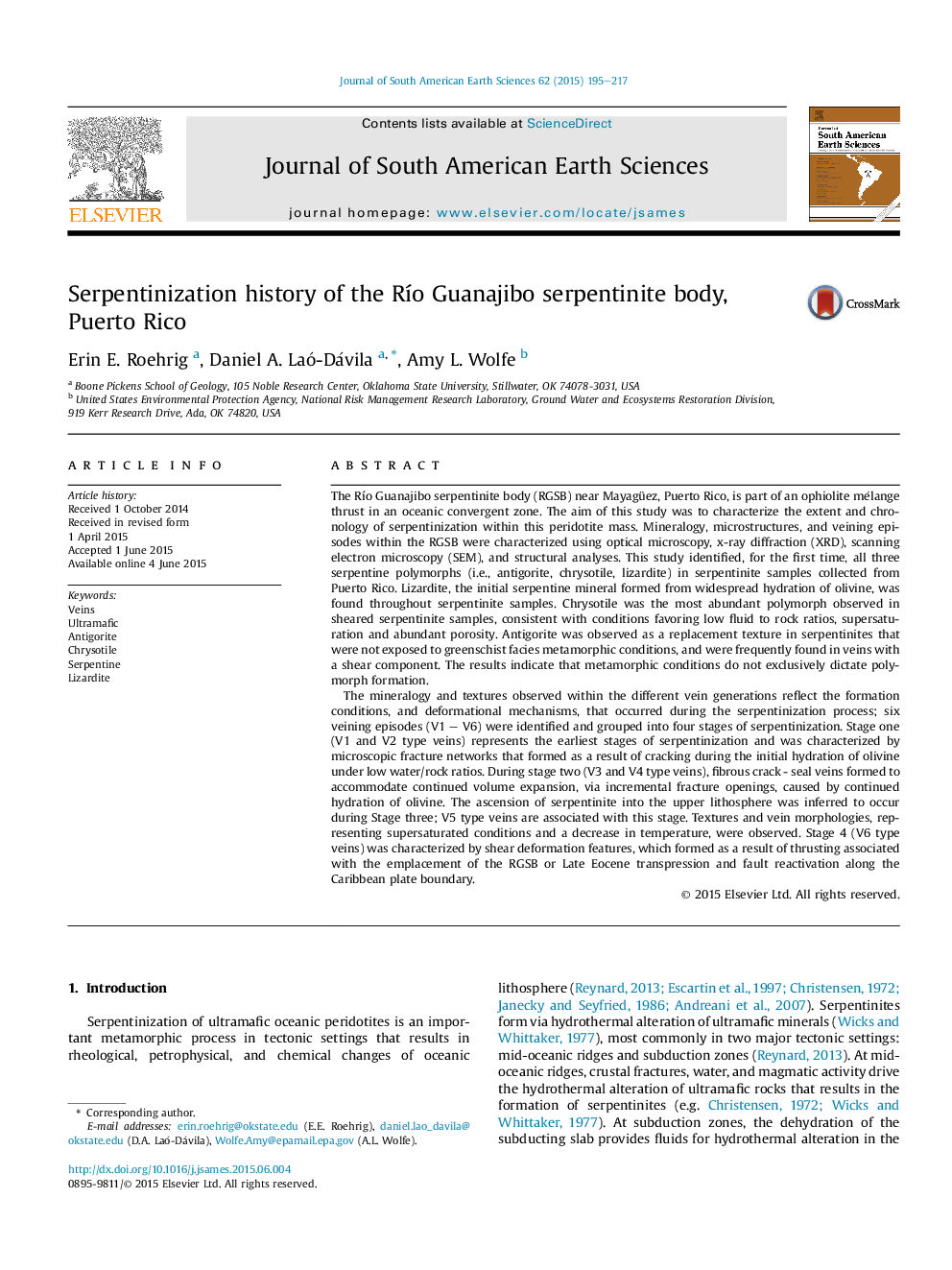| کد مقاله | کد نشریه | سال انتشار | مقاله انگلیسی | نسخه تمام متن |
|---|---|---|---|---|
| 4682193 | 1635147 | 2015 | 23 صفحه PDF | دانلود رایگان |

• We studied serpentinization in the Rio Guanajibo serpentinite in Puerto Rico.
• All three serpentine polymorphs were found.
• We define four stages of serpentinization, punctuated by inferred tectonic events.
The Río Guanajibo serpentinite body (RGSB) near Mayagüez, Puerto Rico, is part of an ophiolite mélange thrust in an oceanic convergent zone. The aim of this study was to characterize the extent and chronology of serpentinization within this peridotite mass. Mineralogy, microstructures, and veining episodes within the RGSB were characterized using optical microscopy, x-ray diffraction (XRD), scanning electron microscopy (SEM), and structural analyses. This study identified, for the first time, all three serpentine polymorphs (i.e., antigorite, chrysotile, lizardite) in serpentinite samples collected from Puerto Rico. Lizardite, the initial serpentine mineral formed from widespread hydration of olivine, was found throughout serpentinite samples. Chrysotile was the most abundant polymorph observed in sheared serpentinite samples, consistent with conditions favoring low fluid to rock ratios, supersaturation and abundant porosity. Antigorite was observed as a replacement texture in serpentinites that were not exposed to greenschist facies metamorphic conditions, and were frequently found in veins with a shear component. The results indicate that metamorphic conditions do not exclusively dictate polymorph formation.The mineralogy and textures observed within the different vein generations reflect the formation conditions, and deformational mechanisms, that occurred during the serpentinization process; six veining episodes (V1 – V6) were identified and grouped into four stages of serpentinization. Stage one (V1 and V2 type veins) represents the earliest stages of serpentinization and was characterized by microscopic fracture networks that formed as a result of cracking during the initial hydration of olivine under low water/rock ratios. During stage two (V3 and V4 type veins), fibrous crack - seal veins formed to accommodate continued volume expansion, via incremental fracture openings, caused by continued hydration of olivine. The ascension of serpentinite into the upper lithosphere was inferred to occur during Stage three; V5 type veins are associated with this stage. Textures and vein morphologies, representing supersaturated conditions and a decrease in temperature, were observed. Stage 4 (V6 type veins) was characterized by shear deformation features, which formed as a result of thrusting associated with the emplacement of the RGSB or Late Eocene transpression and fault reactivation along the Caribbean plate boundary.
Journal: Journal of South American Earth Sciences - Volume 62, October 2015, Pages 195–217